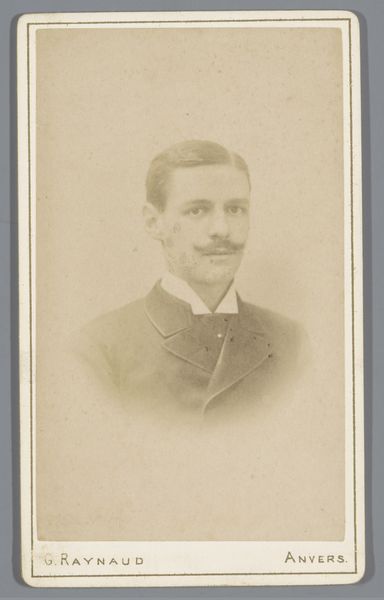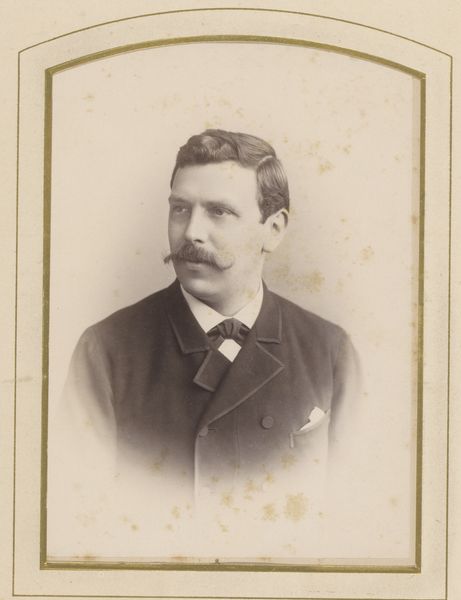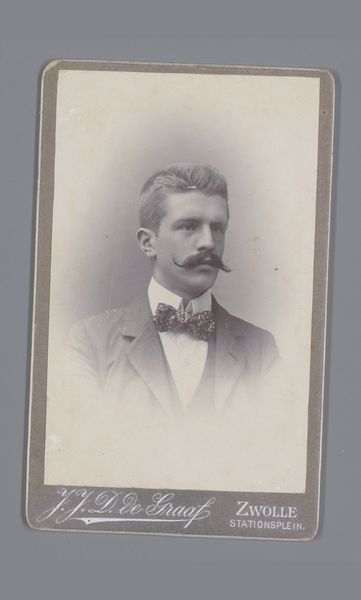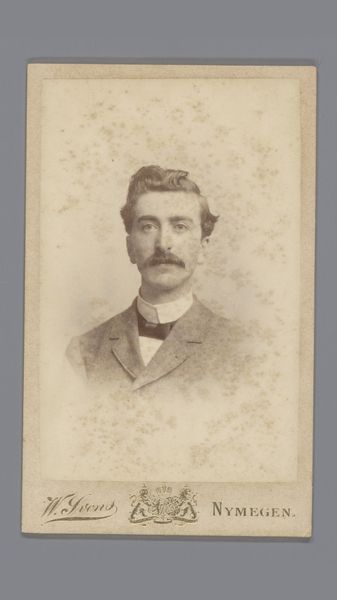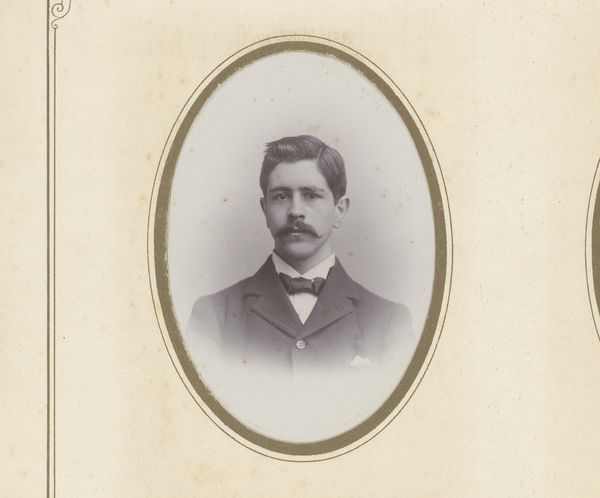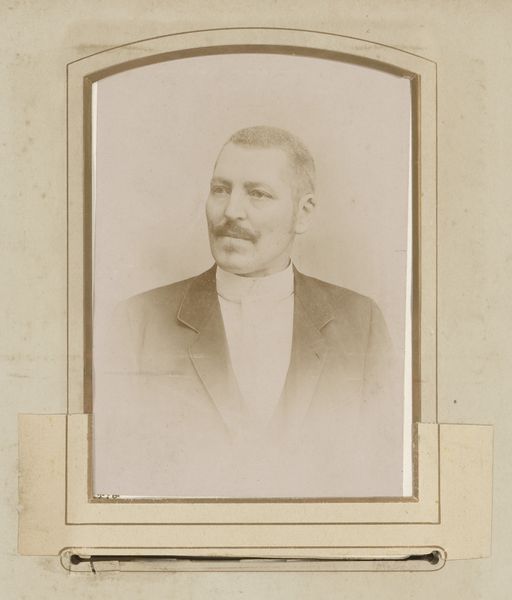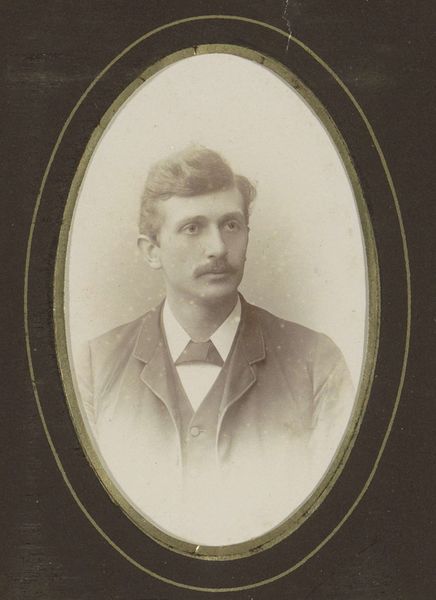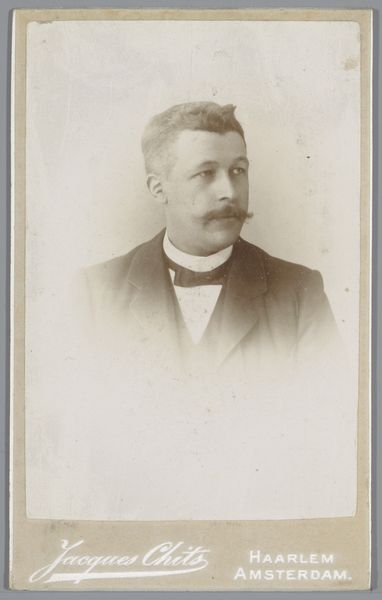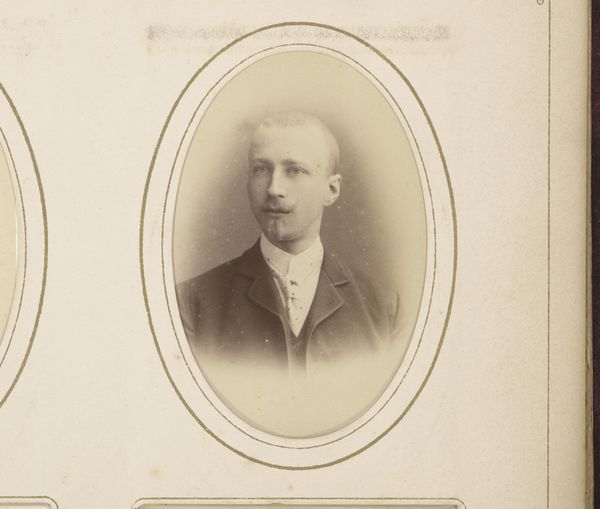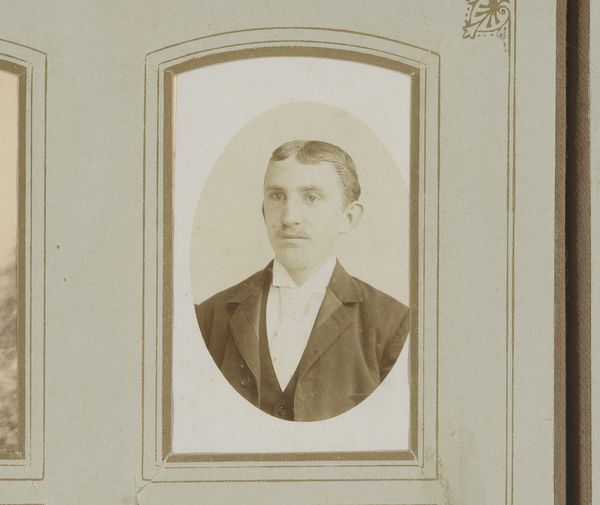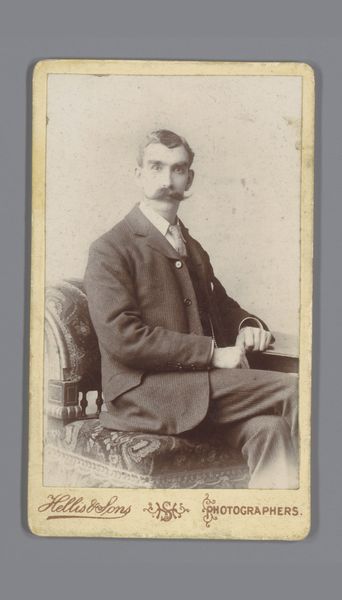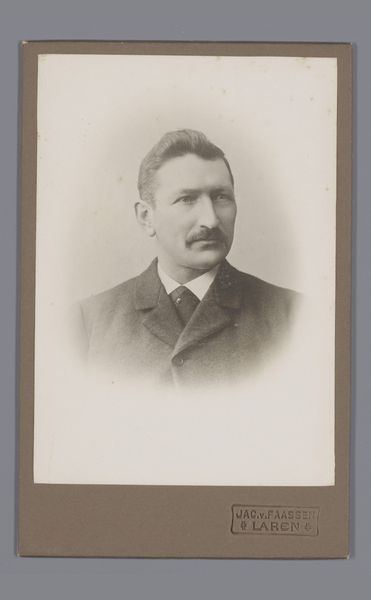
photography
#
portrait
#
photography
#
realism
Dimensions: height 104 mm, width 63 mm
Copyright: Rijks Museum: Open Domain
Editor: We're looking at "Portrait of an Unknown Man" from between 1891 and 1910, attributed to Photographisch Gezelschap. It's a black and white photograph, and I’m struck by its formal rigidity and how the sitter seems both present and distant. How do you interpret this work? Curator: It's crucial to situate this photograph within its historical context. Consider the rise of photography in the late 19th century, where portraits became more accessible to the middle class. It reflects aspirations of self-representation, but within specific constraints dictated by societal expectations. How does the subject's clothing contribute to that understanding? Editor: It seems like he's trying to project a professional image – the suit and tie suggest respectability and a certain social standing. Curator: Precisely. Photography in this period also intersected with emerging scientific ideas, especially around physiognomy, the pseudo-science of judging character from facial features. To what extent do you think the photographer and the sitter were conscious of presenting a particular image linked to class and gender expectations? Editor: That's a really interesting point. I hadn't considered how much control the sitter might have wanted over how they are perceived. It pushes against the idea of a straightforward, objective representation. Curator: The power dynamic is interesting to consider here. Is this image trying to represent this man for who he is, or how he believes he ought to be perceived by the society of the time? And furthermore, can we, as modern viewers, really separate this representation from our own implicit biases? Editor: Thinking about the historical and social context definitely adds a new layer to how I see this portrait. It's no longer just a picture of a man, but a reflection of broader societal forces at play. Curator: Indeed, recognizing the power dynamics embedded in portraiture encourages us to critically assess representation, then and now. Editor: Thanks, I learned a lot.
Comments
No comments
Be the first to comment and join the conversation on the ultimate creative platform.
